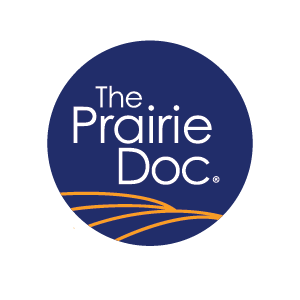Peripheral Artery Screening: A Lifesaving Check-Up for Your Circulation

While you’ve likely had your blood pressure checked in your arm countless times, you may have never had it measured in your leg. Yet this simple and often overlooked screening can be critical for detecting restricted blood flow. If left untreated, inadequate blood flow could lead to serious complications including limb loss, disability or even death.
Many people are unaware of a common and serious condition known as peripheral artery disease (PAD). PAD occurs when the arteries in your legs become narrowed or blocked due to plaque buildup, reducing blood flow to your lower limbs. This condition affects over 8 million Americans and is especially common in those over 60 or with a history of smoking, diabetes or heart disease.
PAD doesn’t always come with obvious symptoms, but when it does, they may include leg pain or cramping during walking (called claudication), numbness, cold feet or wounds on the legs or feet that are slow to heal. Unfortunately, because these symptoms can be subtle or mistaken for other issues like arthritis or aging, PAD is often overlooked, until it leads to serious complications like infections, non-healing wounds or even amputation.
PAD can be detected easily and painlessly with a simple screening called the ankle-brachial index (ABI). Although traditionally completed with a Doppler ultrasound, screening can be completed with an automatic blood pressure cuff. The ABI test compares the systolic blood pressure (the first number) in your ankle to the blood pressure in your arm. The whole process takes only a few minutes and can help identify if blood is not flowing properly to your legs.
Health care providers, including physical therapists, are trained to help identify conditions like PAD early. If we detect signs of reduced circulation through an ABI screening, we’ll refer you to a medical provider for further evaluation. If PAD is diagnosed, treatment often begins with lifestyle changes like quitting smoking, increasing physical activity (especially walking) and managing other health conditions such as high blood pressure or diabetes. Physical therapy can play a key role in treatment. One of the most effective approaches is supervised exercise therapy, which has been shown to improve walking distance, reduce symptoms and enhance overall cardiovascular health. In a supervised setting, physical therapists guide patients through structured walking programs, gradually improving circulation and tolerance to activity in a safe, monitored environment. In some cases, medications or procedures may be needed to improve blood flow.
Screening for PAD is especially important because many people don’t know they have it until it's advanced. Early detection can prevent serious outcomes and allow you to keep moving and living independently.
If you're over 60, have diabetes, smoke or have a family history of cardiovascular disease, consider asking your health care provider or physical therapist about ABI screening. It's quick, non-invasive and could make a life-saving difference.
Your legs have something important to tell you. Make sure you're listening.
Adam Ladwig, Ph.D., DPT, is an associate professor at the University of South Dakota where he teaches cardiovascular and pulmonary physical therapy as well as differential diagnosis. He has 13 years’ experience as a clinician and maintains practice in rural South Dakota.
Jed Droge, DPT, is an assistant professor at the University of South Dakota, where he teaches a variety of subjects, including differential diagnosis, to entry-level physical therapy students. He has 15 years’ experience as a clinician, primarily in rural Nebraska. Follow The Prairie Doc® at www.prairiedoc.org, Facebook, Instagram, YouTube, and Threads. Prairie Doc Programming includes On Call with the Prairie Doc®, a medical Q&A show (most Thursdays at 7pm streaming on Facebook), 2 podcasts, and a Radio program (on SDPB), providing health information based on science, built on trust








